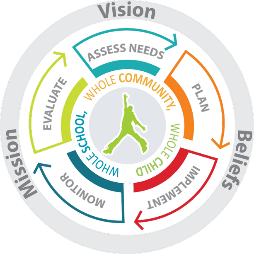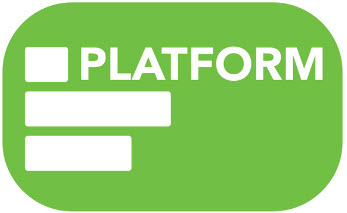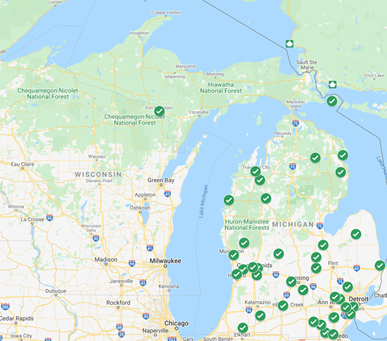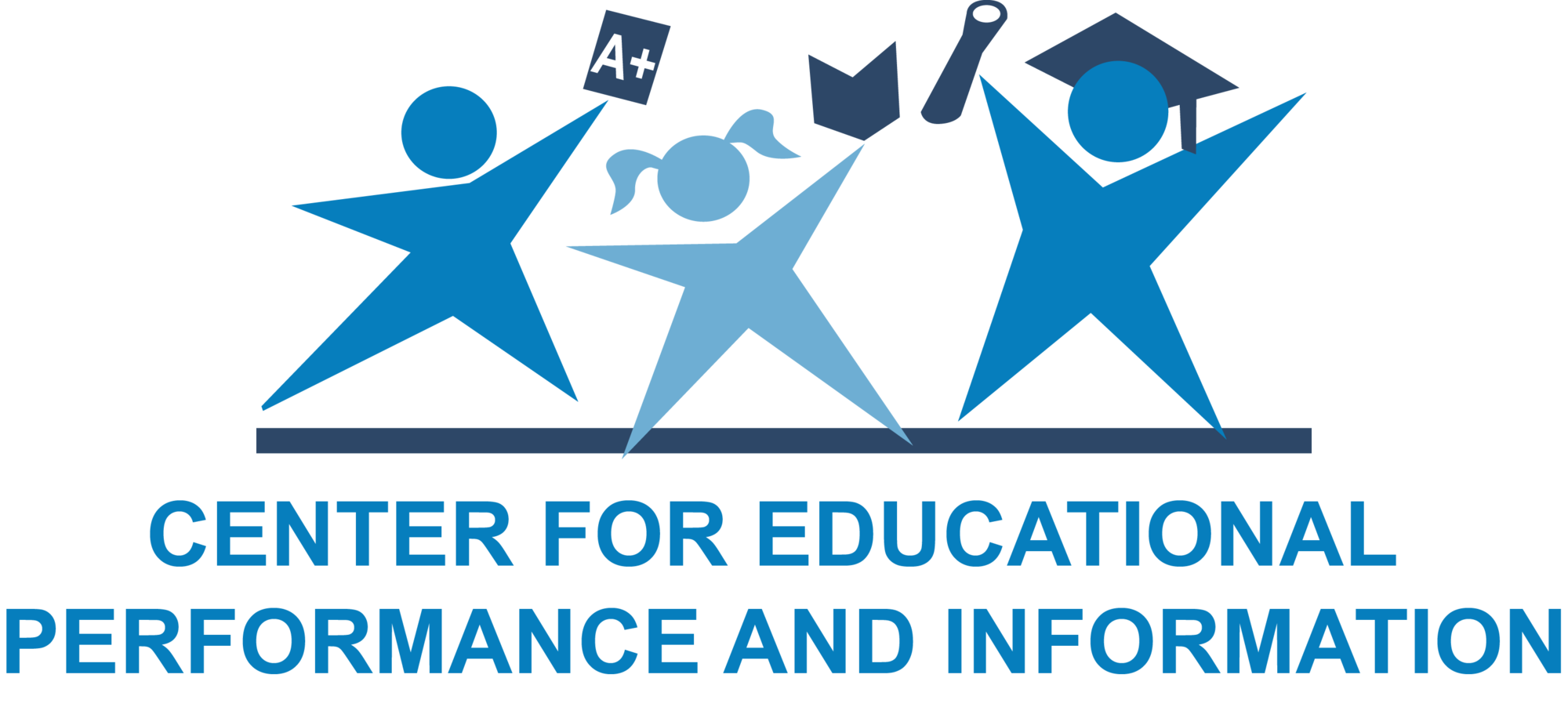December 17, 2020 MICIP Continuous Communication
Michigan Department of Education sent this bulletin at 12/17/2020 11:30 AM EST |
|
Having trouble viewing this email? View it as a Web page. |
Welcome to the December 17, 2020 Issue of MICIP Continuous Communication!
This jam-packed issue includes information about tomorrow's professional learning opportunity, a link to the MICIP availability memo from December 10, information about the steps needed to gain access to the MICIP Platform when it becomes available on January 4, 2021, answers to important questions about MICIP, the final installment of our Engaging in Continuous Improvement series, a year-in-review from the MICIP team, and more!
Be sure to save this issue for future reference. Happy Holidays from the MICIP Team!
 MICIP Professional Learning Opportunity TOMORROW: MICIP Log-in and Data Readiness Checklist
MICIP Professional Learning Opportunity TOMORROW: MICIP Log-in and Data Readiness Checklist
MICIP will offer two professional learning opportunities regarding MICIP platform log-in and the data readiness checklist tomorrow, Friday, December 18.
Both presentations will be recorded for those not able to attend. The recording will be available on MICIP website by mid-January, 2021.
Session 1 – Presentation and Interactive Conversation for ISDs – 1:00 – 2:30 pm:
https://zoom.us/j/99835489499?pwd=TXhaYXBVdG01YW03MGtJdGRZa28vUT09
Meeting ID: 998 3548 9499
Passcode: LaBi3P
One tap mobile
+13126266799,,99835489499#,,,,,,0#,,312054# US (Chicago)
+19292056099,,99835489499#,,,,,,0#,,312054# US (New York)
Session 2 – Webinar Presentation for ISDs and Districts – 2:45 – 4:00 pm – the content is the same as Session 1 but will be less interactive.
https://zoom.us/j/97004924739?pwd=NExzaDAwYWxjb0JrcDNqMUJJMUV3Zz09
Meeting ID: 970 0492 4739
Passcode: t9cH5u
One tap mobile
+13017158592,,97004924739#,,,,,,0#,,746516# US (Washington D.C)
+13126266799,,97004924739#,,,,,,0#,,746516# US (Chicago)
MICIP Continuous Communication Returns Jan. 4
During the holiday break, MICIP Continuous Communication (CC) will take a short break.
There will be no December 31, 2020 issue of MICIP CC, however a special issue will be sent on MICIP Launch Day: January 4, 2021.
MICIP Availability to Local Districts Memo
This memo contains important information about available options for school improvement planning for the 2021-2022 school year. Contact the MICIP Lead Dr. Theresa Nugent at nugentt@michigan.gov with any questions.
 Process of gaining access to MICIP
Process of gaining access to MICIP
On January 4, 2021 MICIP will be accessible in MiLaunchPad.
There are a few steps that must occur before districts have access.
- The district must have the MICIP agreement signed and the data liaison identified in the Data Readiness Tool.
- Renie Araoz, MDE Administrator, will contact the district to identify their MICIP district administrator(s)
- Renie Araoz authorizes the MICIP district administrator with the appropriate functions
- An email is sent to the MICIP district administrator indicating they are authorized in the MICIP platform.
MICP district administrators will be authorized to the MICIP platform starting on January 4, 2021.
Please note it may take a few days for this individual to be in the system due to the large volume of entries in the MICIP platform.
 Your MICIP Questions Answered
Your MICIP Questions Answered
Here are some answers to questions the MICIP team received during the MICIP Continuous Improvement Conference (October 20, 2020). For more information about MICIP and MICIP resources, go to our web page.
We need to do more learning around what data might be useful in place of large scale achievement data. Maybe more SEL, equity, Whole Child data could we collect? Are there common tools for this collection?
- The common tools are Michigan Profile for Healthy Youth survey (MiPHY) and the Healthy School Assessment Tool survey (HSAT).
- Schools are also strongly encouraged to look closely at attendance data as well as suspensions and expulsions and the tie to academics for those students.
- Schools are required to collect expulsion data on all students but only required to collect suspension data on special education students, so we strongly encourage schools to collect suspension data on ALL of their students so they have a complete picture and can make those connections.
- If they have a school nurse or health center tracking those visits for students as well. All of that will tie into academics.
How will MICIP help build the Consolidated Application and how much of the process will remain for districts to complete?
- MICIP will send districts plans to NexSys and the system will extract the information it needs. It is very difficult to know how much process will remain to be complete since there are so many variables to consider. Time savings depends on the district, various funding they receive, if they have private schools to report, and how much detail and/or how many strategies they enter in MICIP.
What are the roles and functions for ISD and district Administrators and Users?
Role Organization Managed By Summary
|
Role |
Organization |
Managed By |
Summary |
|
District* MICIP Administrator
*The term district regarding ISD refers to the ISD planning and managing of programs. |
LEA, PSA, ISD |
MDE MICIP Administrator |
Users of this role will have the ability to manage users within their given organization. By default, the user will have the ability to view an appropriate district dashboard and view the district portfolio. |
|
District User |
LEA, PSA, ISD |
District MICIP Administrator, ISD MICIP Administrator |
The majority of MICP Platform users will be of this type. The districts of this type will be members of the LEA, PSA, or ISD improvement team. By default, the user will have the ability to view an appropriate district dashboard and view the district portfolio. District users will have no administrative capabilities. |
|
ISD MICIP Administrator |
ISD |
MDE MICIP Administrator |
These users will be ISD Staff that work collaboratively with local district staff on the local plans. By default, these users will be allowed to view dashboards, view goal evaluation, and view portfolios for districts within their region. There is no edit capability of local district planning information. ISD users will have no administrative capabilities. |
|
ISD User |
ISD |
ISD MICIP Administrator |
These users will be ISD Staff that work collaboratively with local district staff on the local plans. By default these users will be allowed to view dashboards, view goal evaluation, and view portfolios for districts within their region. There is no edit capability of local district planning information. ISD users will have no administrative capabilities. |
District and ISD Administrators will be able to assign different functions to their users. All users will have access to view the portfolio.
|
Function |
Action…User will be able to |
|
View District Data |
View district data in data story and in strategy monitoring. |
|
Create/Edit District Data |
Create/Edit district data in data story |
|
Submit Plan |
Submit plan to portfolio |
|
Open/Close Plan |
Open or close plan for editing |
|
Add/Update Strategy/Activity Status |
Add/Update strategy and/or activity status as being completed. Also, ability to edit strategy and activity |
|
Add/Update Goal Measures Status |
Add/Update interim and/or end target measures as being completed. Also, ability to edit both measures. |
|
View Goal Evaluation |
View impact tool notes |
|
Edit Goal Evaluation |
Edit impact tool notes |
|
Approve Goal Completion |
Approve goal completion, determine if the goal was met or not, deciding which action comes next, and adds comments as to why this decision was made. |
|
View LEA Portfolio |
ISD Only – view assigned LEA portfolios |
|
Manage LEA User |
ISD Only – manage LEA user via create user account |
|
Impersonate User |
ISD Only – Impersonate user allows access and function as if they were logged in as that district user. |
 Engaging in Continuous Improvement – Funding the Plan
Engaging in Continuous Improvement – Funding the Plan
In contrast to the previous model where districts frequently began the continuous improvement planning process with the amount of funding they had available, used it to build a plan, and then attempted to match it to needs, MICIP is “a pathway for districts to improve student outcomes by assessing whole child needs to develop plans and coordinate funds,” sometimes referred to as Needs-Plans-Funds.
Once a district has decided on its strategy(ies), there are several questions to consider regarding funding:
- What is the total cost of strategy implementation, not just for a single year but also over the life of the implementation of the strategy?
- What funds can be used to support the strategy – including federal, state, and local funds – and how might they be blended and braided?
- What community resources can be leveraged to increase opportunities for meeting the needs of students and families?
In MICIP, planners are asked to indicate the overall cost of the strategy as well as the potential sources of funding. This identification is for planning purposes only and neither the amount nor sources will actually transfer into NexSys (the new MEGS+). However, it is in NexSys where the actual amounts for a given year and from each source will be specified.
So what does blending and braiding mean?
- Blending is a method whereby financial support is combined under a single set of reporting and other requirements, and resources contributed from each individual funding stream lose their award-specific identity. Blending requires specific statutory authorization.
- Braiding is a way for districts to use multiple federal, state, and local funding sources to support parts of an initiative while maintaining their specific identify and purpose, and no statutory authority is necessary.
A single project can have both blended and braided funding. Simply put, blending and braiding is good project management, helps ensure wise use of funds, and decreases the chance that funds will be left unused. Contact your MDE Regional Consultant with questions about this process.
Community resources can also be an important part of the funding process. Not only is it helpful to have community partners as part of the planning process for their ideas and connections; these partners can also frequently bring opportunities for additional funds.
Because educational funding is so tight and districts are looking for any source of funds that might be available, it is tempting to simply accept any dollars that are offered by anyone. However, it is critical that when community partners offer funds, those funds are coordinated with existing continuous improvement efforts so that such efforts are not fragmented.
Coordinating all available funding streams will help ensure that revenue is not wasted and the MICIP goal of Needs-Plans-Funds is realized.
Thank you for reading this Professional Learning Series!
The MICIP Team hopes that you have found this series useful—look for our new series that will begin in January 2021.
If you have suggestions for an upcoming Professional Learning Series, email the MICIP team at mde-micip@michigan.gov.
 Your MICIP Monthly Reminder – If you haven’t already, please do this by the end of December:
Your MICIP Monthly Reminder – If you haven’t already, please do this by the end of December:
- Complete the MICIP Data Readiness Checklist.
- Gain access to the MICIP training site by contacting your ISD support
- Is your team ready for MICIP?
MICIP – The Year in Review
As we reflect on what has been accomplished in 2020, the Michigan Integrated Continuous Improvement Process (MICIP) has much to celebrate as we anticipate a full launch of the MICIP Platform on January 4, 2021. The new year also provides an opportunity to set new goals for our continuous improvement in 2021.
MICIP is ready when districts are ready.
MICIP began as an idea to help districts improve student outcomes by assessing whole child needs to develop plans and coordinate funding. The Michigan Department of Education (MDE), the Center for Educational Performance and Information (CEPI), and the Michigan Association of Intermediate School Administrators (MAISA) formed a partnership to bring the idea to reality.
When asked about continuous improvement, what we heard from districts was that processes were isolated, it was difficult to address whole child needs, funds could not be efficiently connected to needs, and that the improvement process focused on compliance rather than needs. From this feedback, two concepts emerged.
- Needs should drive Plans to coordinate Funds.
- MICIP would consist of a Mindset, a Process, and a Platform.
 The MICIP Mindset is to think about continuous improvement as constant with the whole child, systems, and equity at the forefront. Training was developed on a MICIP Overview and Mindset and a webinar was hosted to give stakeholders an introduction to MICIP. As training around MICIP was being developed, communication efforts also began ramping-up and a MICIP website was created.
The MICIP Mindset is to think about continuous improvement as constant with the whole child, systems, and equity at the forefront. Training was developed on a MICIP Overview and Mindset and a webinar was hosted to give stakeholders an introduction to MICIP. As training around MICIP was being developed, communication efforts also began ramping-up and a MICIP website was created.
 The MICIP Process is the Michigan Continuous Improvement Cycle is comprehensive and iterative. A great deal of training around the MICIP Process was developed and is available on the Professional Learning page at the MICIP website. The training includes several webinars on specific topics including presentations that occurred at the MDE Fall Continuous Improvement Conference.
The MICIP Process is the Michigan Continuous Improvement Cycle is comprehensive and iterative. A great deal of training around the MICIP Process was developed and is available on the Professional Learning page at the MICIP website. The training includes several webinars on specific topics including presentations that occurred at the MDE Fall Continuous Improvement Conference.
 The MICIP Platform is a streamlined web-based application, with integrated tools and resources, that facilitates dialog around continuous improvement and provides a place for districts to record their thinking that will lead to continuous improvement plans. Throughout 2020, in the midst of a pandemic, there was intensive work to develop the MICIP Platform with a scheduled statewide launch on January 4: on time and on budget.
The MICIP Platform is a streamlined web-based application, with integrated tools and resources, that facilitates dialog around continuous improvement and provides a place for districts to record their thinking that will lead to continuous improvement plans. Throughout 2020, in the midst of a pandemic, there was intensive work to develop the MICIP Platform with a scheduled statewide launch on January 4: on time and on budget.
Platform development began with wireframes; which are snapshots of each page of the platform. These wireframes were the only way to display and gather feedback on the platform to ensure the platform would function to support continuous improvement teams throughout the continuous improvement cycle. Root cause analysis and hexagon tools were developed to support the process and were integrated into the platform. The National Implementation Research Network was identified as a partner to provide assistance in improvement science and the development of research-based methods for data analysis.
 In the meantime, 44 intermediate school districts and 46 school districts (see map) volunteered to be testing partners, working on parts of the platform and providing feedback as the platform was being developed. The platform was released to testing partners in a limited launch in October 2020 with continued testing and feedback provided to finalize the platform for statewide launch on January 4, 2021.
In the meantime, 44 intermediate school districts and 46 school districts (see map) volunteered to be testing partners, working on parts of the platform and providing feedback as the platform was being developed. The platform was released to testing partners in a limited launch in October 2020 with continued testing and feedback provided to finalize the platform for statewide launch on January 4, 2021.
An essential feature of the MICIP Platform is its integration with other systems to provide a seamless application for the development of continuous improvement plans.
- Data is prepopulated with the integration of MISchoolData and the MIDataHub.
- District teams will be able to identify strategies within MICIP through its connection to the MIStrategyBank.
- The MICIP Platform consolidates the comprehensive needs assessment and will build a district’s consolidated application.
- Users will log into the system using MILogin or MiLaunchPad.
The year 2020 will be remembered as the year of the COVID-19 pandemic, yet it was during this time that MICIP was developed to be ready when districts are ready.
While districts are required to create school and district improvement plans to meet federal and state requirements for the 2021-22 academic year, if a district is not prepared to begin using a new platform, the Michigan Department of Education (MDE) will create a pathway for submission of paper plans for the 2021-22 school year only.
Districts that are using the MICIP platform will see advantages and ease of submitting these plans and there are many supporting resources available on the MICIP website:
- The MICIP One Pager provides a broad overview of MICIP.
- The MICIP Readiness Checklist helps district leaders prepare themselves and their districts for the transition to MICIP.
- The MICIP Official Video provides a short overview of why MICIP is key to improving student outcomes.
- The MICIP Data Readiness Checklist helps to verify compatibility of district data with the MiDataHub.
- Training on the MICIP mindset and process is available in the professional learning section of the MICIP website.
- Training on the MICIP platform is now available. To gain access, please contact your local intermediate school district for login information and the training manual.
- The MICIP continuous communication eNewsletter is published bi-weekly and provides the latest information about MICIP. Subscribe to the MICIP eNewsletter by following this link.
For accredited districts, plans created in MICIP will be accepted to meet accreditation requirements through Cognia. Please note that Cognia’s ASSIST is no longer available to create district/school plans as of September 30, 2020.
Looking ahead to 2021, MICIP plans to continue to integrate with various applications to help districts with their continuous improvement needs. In addition, it will look for feedback from the field to make the platform perform and service districts better.
MICIP will be ready when districts are ready.
Cognia ASSIST Resources Available until Dec. 31
For over a decade, the Michigan Department of Education has partnered with Cognia (formerly AdvancED and Measured Progress) in support of the Michigan continuous improvement process.
As of September 30, 2020, Cognia’s ASSIST is no longer available. The Michigan Integrated Continuous Improvement Process (MICIP) now supports districts with their continuous improvement planning.
Part of the MDE contractual agreement with Cognia includes access to Cognia tools. All of Michigan’s districts and schools have access to Cognia’s myJourney platform’s planning tools (including eleot, surveys, self-assessment tools, and strategic planning) until December 31, 2020.
If you are interested in using these tools after December 31, please contact Michael Nauss, Michigan account manager (Michael.nauss@cognia.org).
Please Share Continuous Communication
Please feel free to forward Continuous Communication to anyone you feel would like to receive information and updates about MICIP. To subscribe or unsubscribe, please click on this link.
Previous issues of MICIP Continuous Communication are available on the MICIP web page.
Feedback is Essential for Continuous Communication!
Have a question, an idea, a suggestion, or a compliment? The MICIP team is always eager to hear your feedback! Send us an email using the MICIP email address (mde-micip@michigan.gov).



